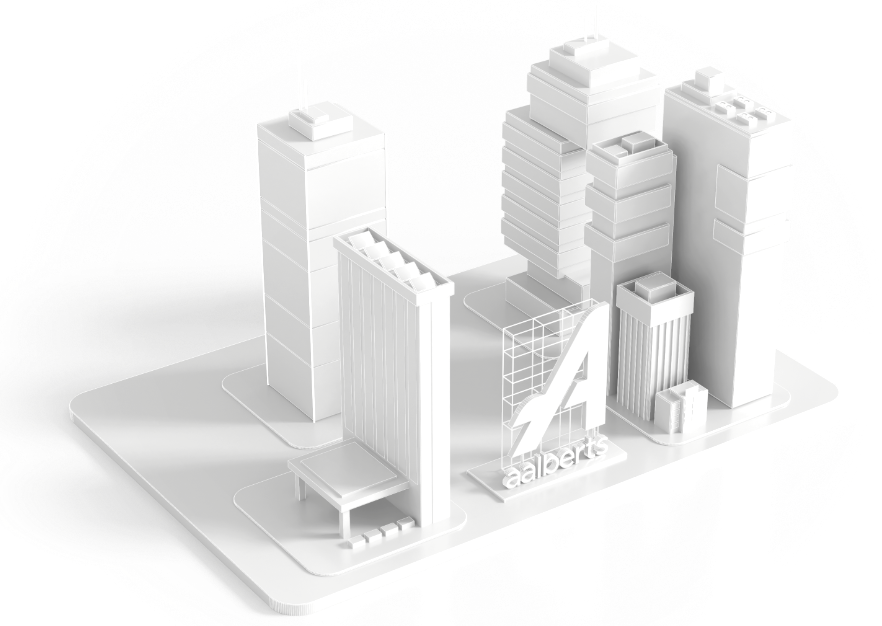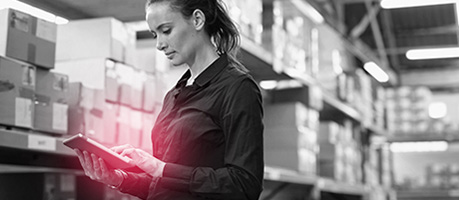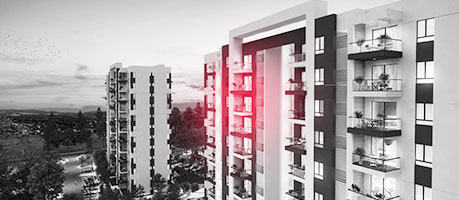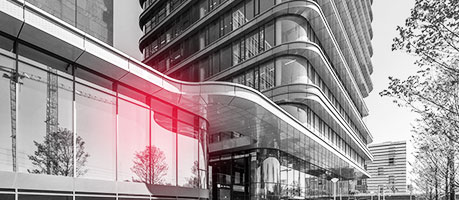about us
the one-stop hydronic engineering specialists for all building challenges
achieving tangible impact
enabling a smart and responsible future in these reference projects

Flamco has been involved in the development, production and sale of high-quality components for use in HVAC systems and fittings and mounting materials since 1956. Along with Comap, it is now under the Aalberts hydronic flow control umbrella.

Since 1921, Comap has been devoted to developing, producing and selling efficient water and energy systems, increasing comfort and well-being of occupants. Along with Flamco, it is now under the Aalberts hydronic flow control umbrella.


reflecting our values
our headquarter in Almere (NL)

Sustainability is one of the core values at Aalberts hydronic flow control. Our new headquarter complex in Almere emobodies this and runs on 100% renewable energy. It was awarded the BREEAM certificate for sustainability with an Outstanding rating in 2021.
Located in the Stichtsekant business park in Almere, east of Amsterdam, the nearly 34,000 square meter complex includes production space, two floors of office space, and logistics space with a loading and unloading pit.
BREEAM is one of the most popular, and most sought-after, certifications when it comes to building sustainability. In order to obtain a BREEAM certification, a building is assessed on several criteria, including energy and water use, the internal environment (health and well-being), pollution, transport, materials, waste, ecology, and management processes. A minimum score of 85% is required to obtain an Outstanding rating.
Our goal for the building was to marry form and function - to create a space that is visually appealing and optimises production. To this end, we worked with our partners to create a campus that is not only nature-inclusive, with ample space for local flora and fauna, but also functions as a healthy working environment for our employees. In addition, the HQ and its environs have been designed to be sustainable from the ground up.
Every part of the new Aalberts HQ at Almere has been designed with the need to reduce energy consumption in mind. Some of the key ways we lower the amount of energy we use:
- Our office and warehouse are heated with residual heat from our factory that is stored in buffer tanks
- Additionally, we find ways to reuse heat all over the campus, reducing overall consumption and cutting down on cost.
- We use a heat pump to cool the building. A neat fact: part of the cooling infrastructure was in our old headquarters in Bunschoten, and was brought over and installed in Almere.
- The roof, windows, and outer walls of our HQ have been insulated so as to retain as much heat as possible.
- We use PV panels on the roof to provide part of the energy we use. Eventually, a total of 140 PV panels will be installed, meaning a significant chunk of our HQ’s energy needs will be met by clean, renewable energy.
- In addition FlexTherm Eco, a PCM heat battery, is being used to store PV energy, preventing the grid from being overloaded and allowing us to make optimum use of our solar power generating capacity.
- We use smart thermostats and heating and cooling meters with remote monitoring to get real-time data regarding our energy consumption, allowing us to see how and where we can improve.
One of our core commitments is to be sustainable in everything we do, which includes not just respecting but working with the natural environment around its buildings. Both of these issues were taken into consideration while designing the new HQ at Almere.
Our vision for this campus was not just a modern, state-of-the-art production facility, but one that, as much as possible, works in harmony with the surrounding environment. It was also important to us to create a healthy working environment for our employees as well as a space where the local plant and animal life could thrive.
To this end, Aalberts HQ at Almere has several green spaces, as well as environmental initiatives like Insect hotels, Hedgehog houses, and Kestrel boxes to help our friends from the animal kingdom thrive.
In addition to heat and water, another major component of energy use in factories is lighting. At the new headquarters in Almere, we have used two principal means of reducing the amount of energy used in lighting: first, the warehouse has been equipped with motion sensitive lights. The space is divided into three zones, and only the zones where there is actual movement of people or forklifts is lit, meaning that energy is not wasted on unnecessary lighting.
Additionally, several large skylights on the roof of the warehouse further negate the need for lighting during certain times of day, which also brings down energy consumption as well as operational costs.
The smart lighting concept also works in the office in work spaces, meeting rooms and even restrooms, further cutting down on energy use.
In this pressing time of rapid climate change and increasing urbanisation, it has never been more vital to focus on meaningful long-term energy sustainability. Leading by example, our headquarters are also powered by 100% renewable electricity.
Currently, only about 20% of Europe’s power comes from renewable sources. We at Aalberts hydronic flow control are committed to being part of the movement to change this by continuing to design innovative, mission-critical technologies for heating and cooling systems. Our solutions have helped realise eco-friendly buildings, powered by mission-critical technologies, working on renewable energy sources when possible.
Energy storage solutions such as our Flextherm Eco thermal charging systems are vital for efficiently storing the power to provide heat when it’s needed. Our air and dirt separators, balancing valves, smart thermostats and other assorted solutions also help ensure that this energy is distributed and consumed in the most efficient ways possible as well as provide data-driven insights on this usage. Working in concert as a full system, these technologies optimise on the efficiencies created at every stage to create substantial energy savings and make 100% renewable electricity increasingly feasible for building owners.
We will continue to design and innovate crucial heating and cooling technologies for buildings and green energy sources that steer us closer to the goal of 100% renewable electricity.
We understand it’s not enough to just pursue energy efficiency from renewable sources in our mission-critical technologies, to achieve our sustainability goals. This is why we have widened our scope to include the lifecycle of the materials used in projects, how they are recycled and how energy itself can be recycled into different parts of the hydronic system.
Reducing energy waste
Residual heat created by the system operating is a great source of heat for a building. We custom design our installations to recycle residual energy in certain areas of the system and even store it for later use. For instance, in one of our installations, we used buffer tanks to store residual heat created by the factory, recycling it to heat the warehouse and offices of the building.
Closing material loops
We believe in the sustainable sourcing and transport of raw materials to minimise our carbon footprint. To further reduce production wastage, we use recyclable materials wherever we can and responsibly source high-quality materials that enhance the life cycle of the system, reducing the need for replacements.
All of the waste and scrap is recycled either on-site and put right back into the production cycle or through various recycling companies. We also opt for eco-friendly packaging for transport. Like our heating and cooling installations, we believe a holistic perspective of the system is vital to achieving maximum efficiency.
Sustainability is one of the core values at Aalberts hydronic flow control. Our new headquarter complex in Almere emobodies this and runs on 100% renewable energy. It was awarded the BREEAM certificate for sustainability with an Outstanding rating in 2021.
Located in the Stichtsekant business park in Almere, east of Amsterdam, the nearly 34,000 square meter complex includes production space, two floors of office space, and logistics space with a loading and unloading pit.
BREEAM is one of the most popular, and most sought-after, certifications when it comes to building sustainability. In order to obtain a BREEAM certification, a building is assessed on several criteria, including energy and water use, the internal environment (health and well-being), pollution, transport, materials, waste, ecology, and management processes. A minimum score of 85% is required to obtain an Outstanding rating.
Our goal for the building was to marry form and function - to create a space that is visually appealing and optimises production. To this end, we worked with our partners to create a campus that is not only nature-inclusive, with ample space for local flora and fauna, but also functions as a healthy working environment for our employees. In addition, the HQ and its environs have been designed to be sustainable from the ground up.
Every part of the new Aalberts HQ at Almere has been designed with the need to reduce energy consumption in mind. Some of the key ways we lower the amount of energy we use:
- Our office and warehouse are heated with residual heat from our factory that is stored in buffer tanks
- Additionally, we find ways to reuse heat all over the campus, reducing overall consumption and cutting down on cost.
- We use a heat pump to cool the building. A neat fact: part of the cooling infrastructure was in our old headquarters in Bunschoten, and was brought over and installed in Almere.
- The roof, windows, and outer walls of our HQ have been insulated so as to retain as much heat as possible.
- We use PV panels on the roof to provide part of the energy we use. Eventually, a total of 140 PV panels will be installed, meaning a significant chunk of our HQ’s energy needs will be met by clean, renewable energy.
- In addition FlexTherm Eco, a PCM heat battery, is being used to store PV energy, preventing the grid from being overloaded and allowing us to make optimum use of our solar power generating capacity.
- We use smart thermostats and heating and cooling meters with remote monitoring to get real-time data regarding our energy consumption, allowing us to see how and where we can improve.
One of our core commitments is to be sustainable in everything we do, which includes not just respecting but working with the natural environment around its buildings. Both of these issues were taken into consideration while designing the new HQ at Almere.
Our vision for this campus was not just a modern, state-of-the-art production facility, but one that, as much as possible, works in harmony with the surrounding environment. It was also important to us to create a healthy working environment for our employees as well as a space where the local plant and animal life could thrive.
To this end, Aalberts HQ at Almere has several green spaces, as well as environmental initiatives like Insect hotels, Hedgehog houses, and Kestrel boxes to help our friends from the animal kingdom thrive.
In addition to heat and water, another major component of energy use in factories is lighting. At the new headquarters in Almere, we have used two principal means of reducing the amount of energy used in lighting: first, the warehouse has been equipped with motion sensitive lights. The space is divided into three zones, and only the zones where there is actual movement of people or forklifts is lit, meaning that energy is not wasted on unnecessary lighting.
Additionally, several large skylights on the roof of the warehouse further negate the need for lighting during certain times of day, which also brings down energy consumption as well as operational costs.
The smart lighting concept also works in the office in work spaces, meeting rooms and even restrooms, further cutting down on energy use.
In this pressing time of rapid climate change and increasing urbanisation, it has never been more vital to focus on meaningful long-term energy sustainability. Leading by example, our headquarters are also powered by 100% renewable electricity.
Currently, only about 20% of Europe’s power comes from renewable sources. We at Aalberts hydronic flow control are committed to being part of the movement to change this by continuing to design innovative, mission-critical technologies for heating and cooling systems. Our solutions have helped realise eco-friendly buildings, powered by mission-critical technologies, working on renewable energy sources when possible.
Energy storage solutions such as our Flextherm Eco thermal charging systems are vital for efficiently storing the power to provide heat when it’s needed. Our air and dirt separators, balancing valves, smart thermostats and other assorted solutions also help ensure that this energy is distributed and consumed in the most efficient ways possible as well as provide data-driven insights on this usage. Working in concert as a full system, these technologies optimise on the efficiencies created at every stage to create substantial energy savings and make 100% renewable electricity increasingly feasible for building owners.
We will continue to design and innovate crucial heating and cooling technologies for buildings and green energy sources that steer us closer to the goal of 100% renewable electricity.
We understand it’s not enough to just pursue energy efficiency from renewable sources in our mission-critical technologies, to achieve our sustainability goals. This is why we have widened our scope to include the lifecycle of the materials used in projects, how they are recycled and how energy itself can be recycled into different parts of the hydronic system.
Reducing energy waste
Residual heat created by the system operating is a great source of heat for a building. We custom design our installations to recycle residual energy in certain areas of the system and even store it for later use. For instance, in one of our installations, we used buffer tanks to store residual heat created by the factory, recycling it to heat the warehouse and offices of the building.
Closing material loops
We believe in the sustainable sourcing and transport of raw materials to minimise our carbon footprint. To further reduce production wastage, we use recyclable materials wherever we can and responsibly source high-quality materials that enhance the life cycle of the system, reducing the need for replacements.
All of the waste and scrap is recycled either on-site and put right back into the production cycle or through various recycling companies. We also opt for eco-friendly packaging for transport. Like our heating and cooling installations, we believe a holistic perspective of the system is vital to achieving maximum efficiency.
find us here
boiler room technology
Pressurisation & Storage | Efficiency & Safety
Energy Distribution | Transfer Stations & Metering
Water Quality
distribution and emitter technology
Balancing & Control | Emitter & Comfort Control
Connection Systems ML/PEX
boiler room technology
Almere (NL)
Gerichshain (DE)
Wijhe (NL)
St. Helens (UK)
Moscow (RU)
Leszno (PL)
Gorzów (PL)
Rosswein (DE)
distribution and emitter technology
Abbeville (FR)
Nevers (FR)
Brescia (IT)
Argenbühl (DE)
Schwallungen (DE)
Fishers (US)
sales offices
The Netherlands (HQ)
Austria
Belgium
China
Czech Republic
Denmark
Estonia
Finland
France
Germany
Hungary
Northern Macedonia
Poland
Russia
Slovakia
Sweden
Switzerland
United Arab Emirates
United Kingdom
United States of America
boiler room technology
Pressurisation & Storage | Efficiency & Safety
Energy Distribution | Transfer Stations & Metering
Water Quality
distribution and emitter technology
Balancing & Control | Emitter & Comfort Control
Connection Systems ML/PEX
boiler room technology
Almere (NL)
Gerichshain (DE)
Wijhe (NL)
St. Helens (UK)
Moscow (RU)
Leszno (PL)
Gorzów (PL)
Rosswein (DE)
distribution and emitter technology
Abbeville (FR)
Nevers (FR)
Brescia (IT)
Argenbühl (DE)
Schwallungen (DE)
Fishers (US)
sales offices
The Netherlands (HQ)
Austria
Belgium
China
Czech Republic
Denmark
Estonia
Finland
France
Germany
Hungary
Northern Macedonia
Poland
Russia
Slovakia
Sweden
Switzerland
United Arab Emirates
United Kingdom
United States of America






